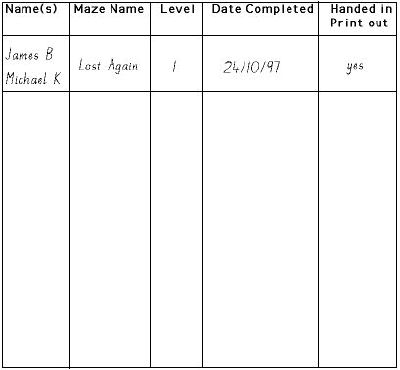
Question 6.
Area of nationally developed curriculum, with strand and student learning outcome(s)
Teachers are encouraged to teach maths to
every class for some amount of time every day. When planning this lesson I
considered this and as a result this lesson could be used in such a setting.
Using the kitos this lesson is developed around Level 2. (grade 3-4) and the
Problem Solving Mode - Identify types of micro-electric devices in everyday
life. The curriculum area of focus is Mathematics and Technology. Some desired
outcomes included in this plan are:
Mathematics
Measurement (Measuring) 2.19 - "Directly and indirectly compares lengths and
capacities and measures and makes lengths and distances by counting uniform
units, including metres and centimetres."
Number (Mental computation) 2.15 - "Estimates and calculates mentally,
including adding and subtracting numbers to 10 and making extensions based on
place value."
Technology
Systems (Techniques) 2.10 - " Uses techniques and equipment to organise, assemble and trial simple linear systems.
Question 7.
Off-computer activities related to the topic.
Some activities that are suited to this
lesson are: The teacher sets the scene by telling the students that as he walked
past a classroom one day he heard a boy say "17". and the teacher said, "thats
right". The teacher could then ask the students what question could the teacher
have asked? The objective is to get the students to write down all the possible
questions that could have been asked by the teacher.
Another good activity is the students are given a few plants that are to be
watered and cared for on a daily basis. The students have to organise a roster
for; Who/what group will care for what plants on what day? Who will take care of
the plants over the weekend? Making sure that all students are given equal
responsibility.
Get students to use a unit consistently and carefully to measure length. The
students can choose a number of objects or the teacher may want to list objects
around the classroom or playground. Students my choose their own measuring
device or the teacher can choose.
A step on from the following activity could be to get the students to convert
these measurements into centimetres and metres by measuring their measuring
device. For example, if the paperclip (measuring device) is 2cm in length and
the book measures 5 paperclips long then the book is 10cm in length.
Question 8.
Computer-based activities related to the topic
Students would begin the software at level
1. and when confident would be able to proceed on to levels 2 or 3. With such
great variation in screen style, the students would be able to attempt many
different screens. Another activity would be to have the students create their
own maze, this too would provide great opportunity to use those skills needed
for maths and technology.
Question 9.
Classroom management and evaluation strategies
A time table for use on the computer would
have to be organised. (obviously depending on the number of computers per
student) Maybe certain days of the week for particular groups, rotating and
swapping from week to week would be a good idea..
To maintain organisation in the classroom and a better working environment
for the students the computers would be positioned in a separate section of the
classroom. Care with positioning would be taken so as to provide the best
ergonomic environment.
I constructed a form, seen below, that would be helpful to the teacher for
evaluating the students work, as far as the software is concerned. Students
would be required to fill this form out themselves. This would help to know what
stage the students are up to, how much time has been spent on the computer and
with the print out of the students programs the teacher could even view mistakes
made by the students. These print outs could also be used for a maths corner
display.

For other work done in this lesson the teacher might want to create display corners so the class could display, for example, their questions that they had to make up for which the answer equaled 18. The students roster for caring for the plants and maybe even the plants themself. Whether the plants live or die would be a good indication whether learning has taken place.
Other evaluation strategies would consist of another form with the relevant kitos and outcomes across the top and student's names listed to the left of the form, leaving sufficient space for comments and grading by the teacher.